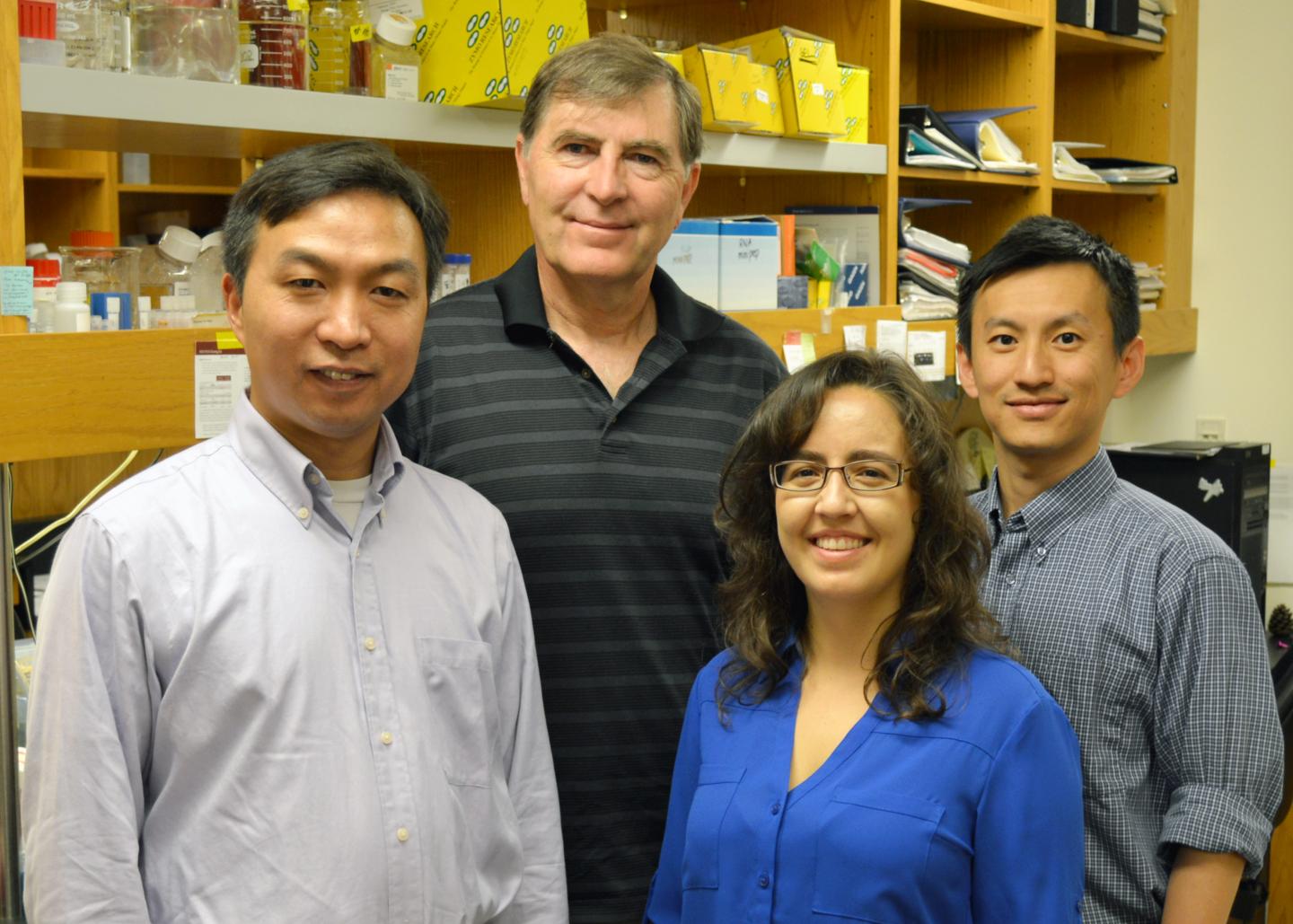
Authors of the new paper include (left to right) Changchun Xiao, David Nemazee, Alicia Gonzalez Martin and Maoyi Lai of The Scripps Research Institute. A new study, led by scientists at The Scripps Research Institute (TSRI), reveals a surprising twist in immune biology.
The research in animal models suggests that members of a cluster of microRNAs (miRNAs)--small non-coding RNA molecules that play a role in regulating gene expression--work together throughout the different stages of immune cell generation.
Interestingly, the researchers discovered that different members of the cluster dominate different stages as disease-targeting immune cells, called B cells, develop--a finding that could guide the development of therapies against autoimmune diseases.
"Although the miRNAs in the cluster are all expressed, it's not like they're playing the same role--different individual miRNAs within the cluster are more important than others in controlling different stages of B cell development," said TSRI Research Associate Alicia Gonzalez Martin, who served as co-first author of the study with TSRI Professional Scientific Collaborator Maoyi Lai and Anthony B. Cooper, a TSRI researcher now at Adimab.
"At different stages, one miRNA is like the lead actor and another is like a supporting actor," added Lai.
The study, published August 2, 2016, in the journal Nature Communications, was co-led by TSRI Associate Professor Changchun Xiao and TSRI Professor David Nemazee.
A Key Question in Drug Development
As they develop, the immune system's B cells acquire specific receptors to allow them to recognize and attack harmful pathogens. The receptor assembly process is random, and sometimes this roll of the dice leads to potentially harmful cells--such as B cells that produce antibodies against the body's own tissues, causing autoimmune diseases like lupus.
miRNAs appear to be crucial for healthy B cell development. Previous TSRI studies from the Xiao lab have shown that six miRNAs form a cluster called miR-17~92, whose expression has to stay at just the right level to stop cells from triggering cancers or autoimmune diseases.
In the new study, the researchers investigated the roles of the six miRNAs in this cluster to see if any might be good targets for future therapeutics.
"miRNA-based therapies are usually designed for certain miRNAs, not a whole cluster," Lai explained. "If you can narrow it down to one or two important miRNAs, you can design miRNA mimics or anti-miRNAs to try to restore the normal expression level."
A Shift in Power
The new study suggests that the expression of two miRNAs in this cluster, called miR-17 and miR-19, are key to healthy B cell development.
By "knocking out" (disabling) expression of these select miRNAs in mouse models, the researchers found that miR-17 steps in early in B cell development, making it possible for B cells to progress through this stage and produce the receptors they need to fight infections later on. Although the pathway for this action is not yet known, the researchers found that B cells without miR-17 cannot develop effectively--thus weakening the immune system.
miR-19 expression is important later on in B cell development, helping to regulate the quality control "checkpoint" system that stops harmful B cells from escaping the bone marrow and causing disease.
The researchers found that overexpression of miR-19 led to a reduced expression of a gene called Pten, allowing potentially autoimmune disease-causing cells to survive longer and get past the checkpoint.
"Pten has been the focus of oncology studies, so it's interesting to see that this gene is also involved in tolerance checkpoints," said Lai.
Other miRNAs from the cluster are involved during both of these processes, but they appear to have minor roles.
The researchers plan to continue their investigation into the roles of different miRNAs at the tolerance checkpoint stage and their roles in autoimmunity, with the goal of figuring out which might be the best to target with future therapeutics.
Source: Scripps Research Institute
 Print Article
Print Article Mail to a Friend
Mail to a Friend
